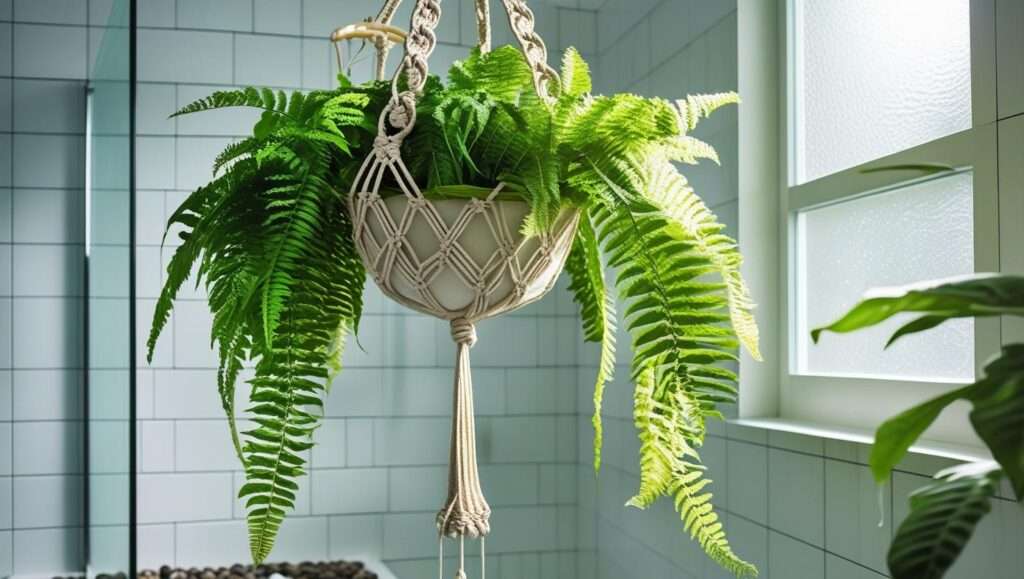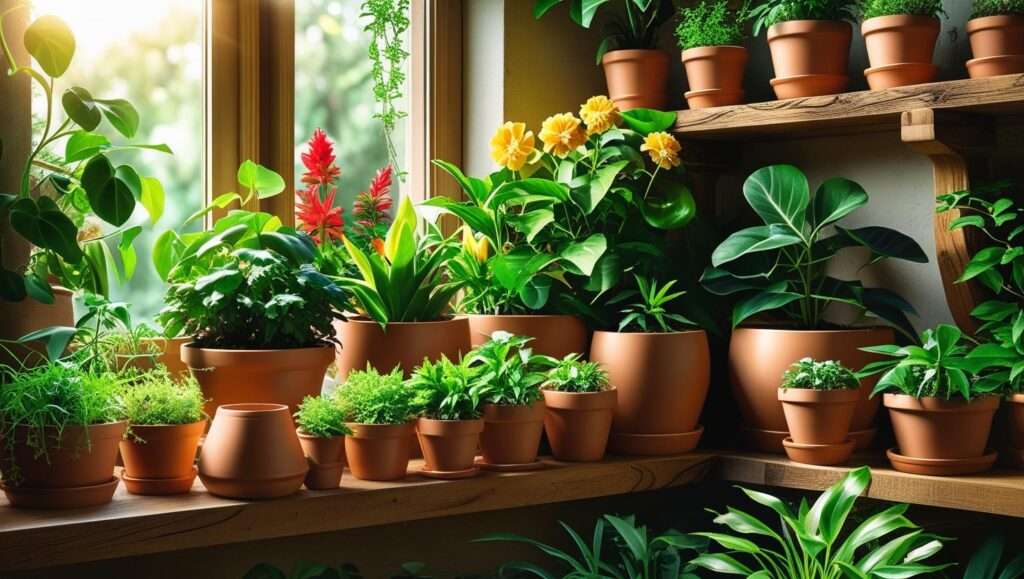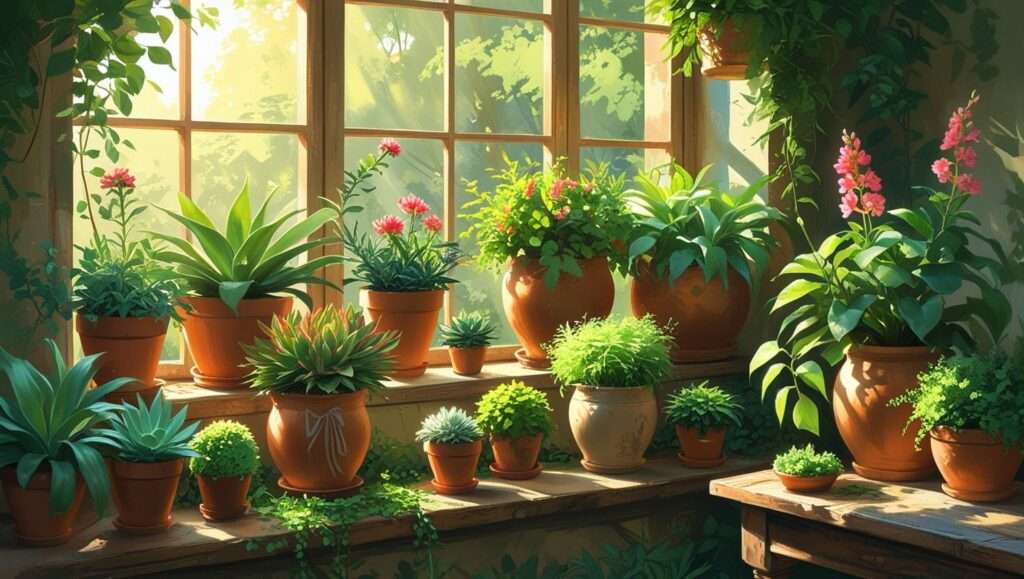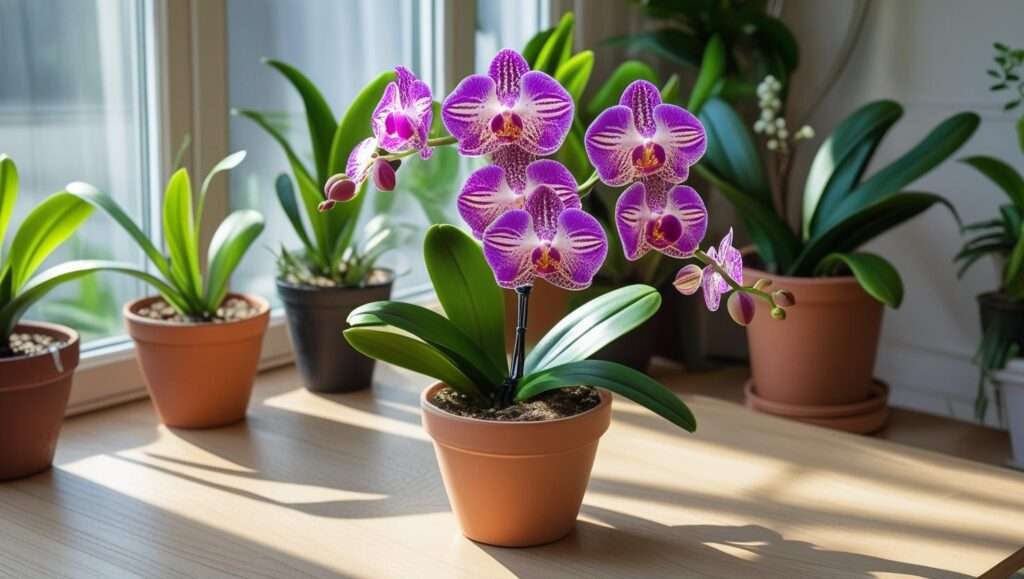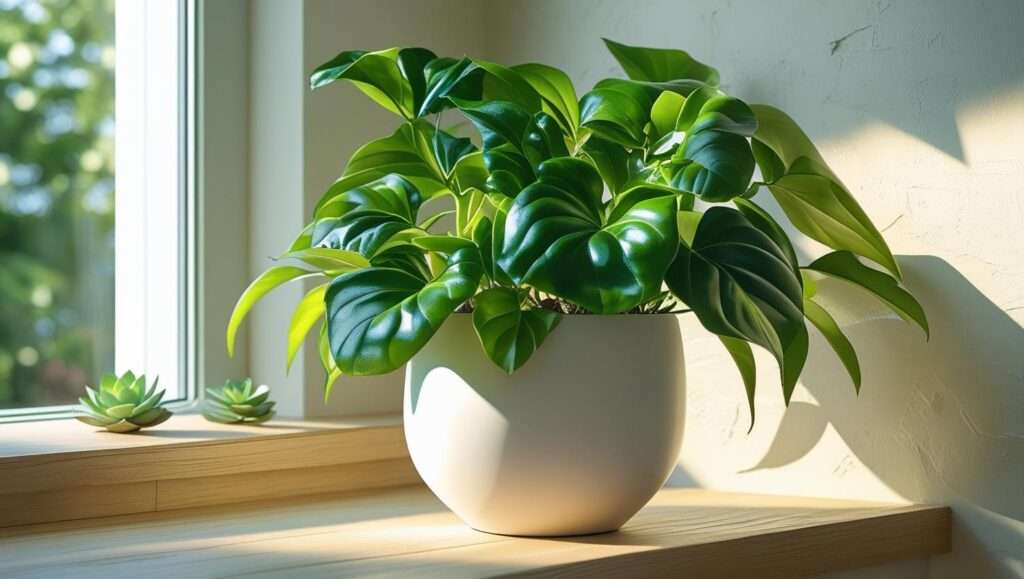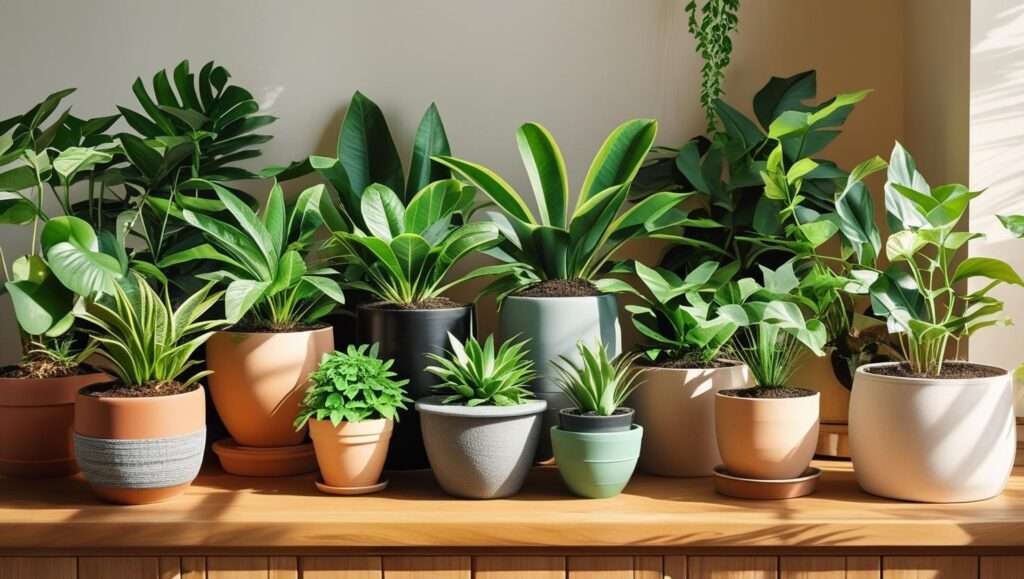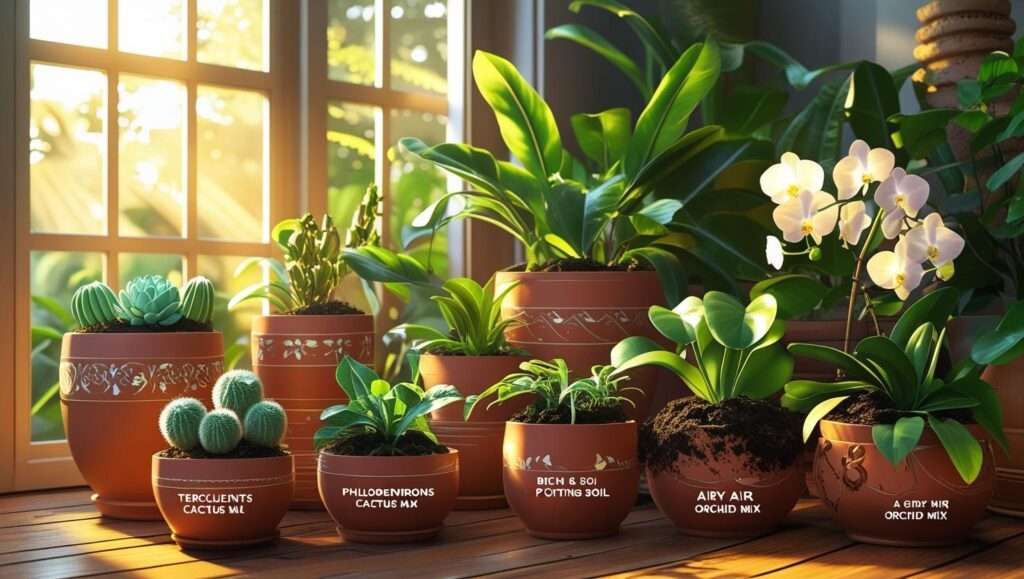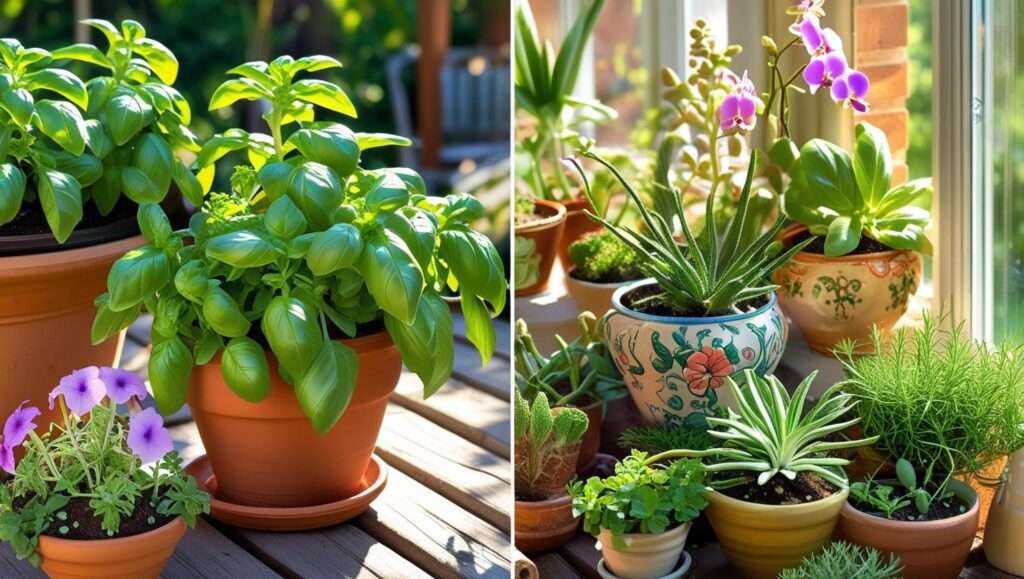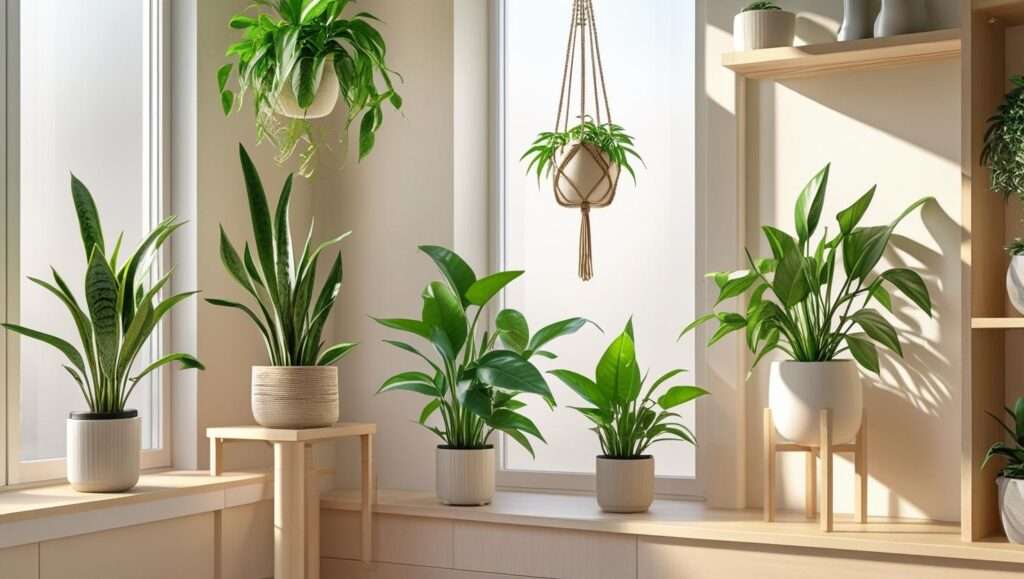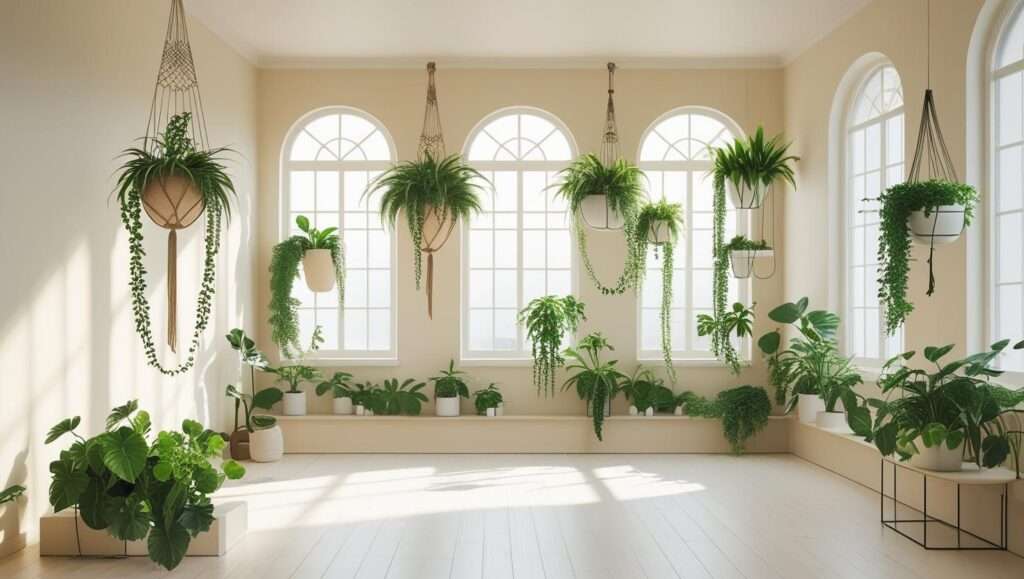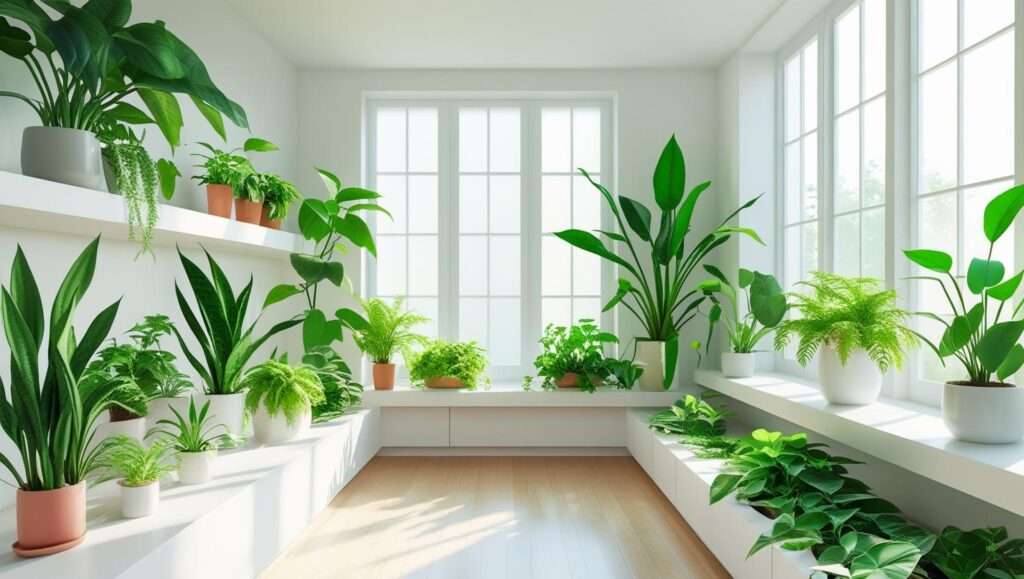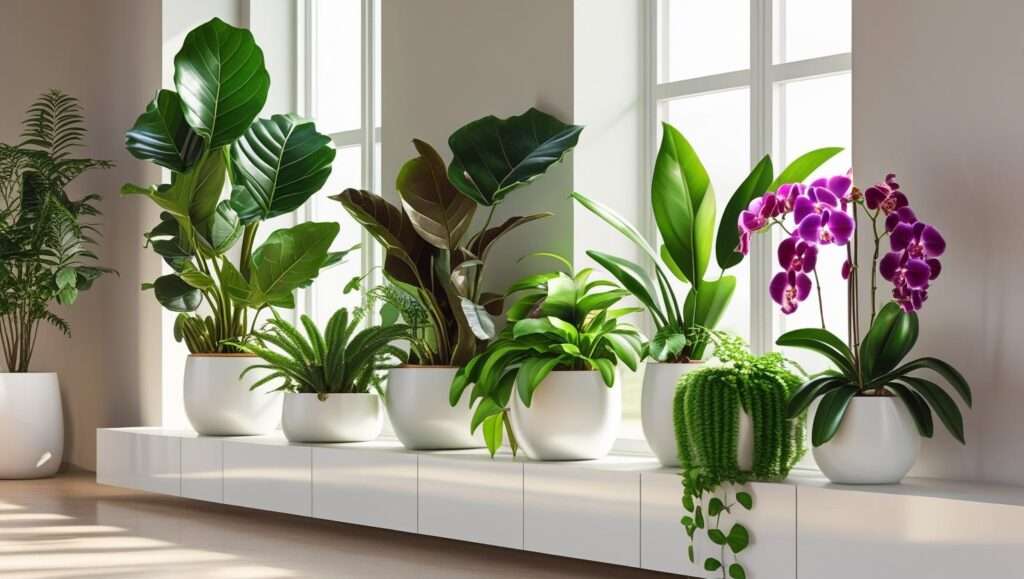Imagine transforming your home into a lush, green sanctuary without spending hours on plant care. Hanging plants indoor spaces adore are the perfect solution for busy individuals craving nature’s touch. These cascading beauties save space, elevate decor, and purify air—all with minimal effort. Whether you’re a novice gardener or a seasoned plant parent, the challenge of maintaining vibrant greenery in a hectic lifestyle is real. This article delivers a curated list of the top 10 low-maintenance hanging plants indoor gardens thrive on, backed by expert insights, practical care tips, and creative display ideas. Get ready to bring effortless greenery into your home!
Why Choose Hanging Plants for Indoor Spaces?
Hanging plants are a game-changer for indoor gardening, blending functionality with stunning aesthetics. They’re ideal for anyone looking to maximize space, enhance their home’s vibe, or enjoy the wellness benefits of greenery without high maintenance.
Space-Saving Benefits

In small apartments or cozy homes, floor space is precious. Hanging plants utilize vertical space, freeing up floors and surfaces. By suspending plants from ceiling hooks or wall-mounted planters, you create a green oasis without clutter. For example, a cascading pothos can drape elegantly over a bookshelf, adding life to unused corners. This approach aligns with modern interior design trends like vertical gardening, making it a practical choice for urban dwellers.
Aesthetic Appeal
Hanging plants add texture, depth, and a natural flow to any room. Their trailing vines or lush fronds create a sense of movement, softening harsh lines in minimalist or industrial decor. The biophilic design trend—connecting humans with nature—has spotlighted hanging plants as a must-have. Whether it’s the quirky beads of a string of pearls or the classic elegance of English ivy, these plants elevate your space’s visual appeal, making it Instagram-worthy.
Health and Wellness Perks
Beyond beauty, hanging plants offer tangible health benefits. Many, like pothos and spider plants, are known for their air-purifying qualities. According to NASA’s Clean Air Study, certain indoor plants can remove toxins like formaldehyde and benzene from the air. Cleaner air means better respiratory health and a more refreshing home environment. Additionally, greenery boosts mental well-being by reducing stress and fostering calm, a fact supported by studies on biophilia from institutions like the University of Technology Sydney.
Low-Maintenance Advantage

For those with packed schedules, low-maintenance hanging plants are a lifesaver. These resilient species thrive with minimal watering, forgiving occasional neglect, and adapting to various light conditions. They’re perfect for beginners or anyone seeking greenery without the fuss. This article focuses on plants that align with the search intent behind “hanging plants indoor”—easy-care options that deliver beauty and benefits without demanding expertise.
Top 10 Low-Maintenance Hanging Plants Indoor Gardens Love
To compile this list, we consulted horticulturists and indoor gardening experts, selecting plants based on ease of care, adaptability to indoor environments, and aesthetic appeal. Each plant is a proven performer, ensuring you get vibrant greenery with minimal effort.
Selection Criteria
Our choices prioritize plants that thrive in typical indoor conditions—moderate light, average humidity, and occasional watering. We’ve included insights from nursery owners and botanists to ensure credibility, focusing on species that are forgiving, visually striking, and versatile for various decor styles. Whether you’re in a dimly lit apartment or a sunny loft, these plants will flourish.
1. Pothos (Epipremnum aureum)
Description: Pothos, often called devil’s ivy, boasts heart-shaped leaves in green or variegated patterns, with vines that can trail up to 10 feet. Its lush, cascading growth makes it a favorite for hanging baskets.
Care Tips: Thrives in low to bright indirect light. Water every 1-2 weeks when the top inch of soil feels dry. Use a well-draining potting mix and fertilize monthly during spring and summer.
Why It’s Great: Pothos is nearly indestructible, tolerating low light and irregular watering. It’s also an air purifier, removing toxins like benzene. Its versatility suits any room, from offices to bedrooms.
Pro Tip: Propagate cuttings in water to create new plants for friends or to fill more baskets.
2. Spider Plant (Chlorophytum comosum)
Description: Known for its arching green and white striped leaves, the spider plant produces “pups” or plantlets that dangle charmingly, perfect for hanging displays.
Care Tips: Prefers bright indirect light but tolerates low light. Water when the soil is dry, typically weekly. Avoid overwatering to prevent root rot.
Why It’s Great: Spider plants are pet-safe, fast-growing, and resilient, making them ideal for beginners. Their air-purifying qualities add to their appeal.
Expert Insight: “Spider plants are a go-to for new gardeners,” says Jane Miller, a botanist with 20 years of experience. “Their adaptability and playful plantlets make them a joy to grow.”
3. String of Pearls (Senecio rowleyanus)
Description: This succulent features bead-like leaves on delicate, trailing stems, resembling a string of green pearls. Its unique look adds a modern flair to any space.
Care Tips: Needs bright light, ideally near a south-facing window. Water sparingly—every 2-3 weeks—ensuring the soil dries out completely. Use a cactus or succulent mix for drainage.
Why It’s Great: Its quirky aesthetic makes it a conversation starter, and its low water needs suit forgetful plant owners.
Example: Hang it on a high shelf to let its strands cascade freely, creating a living sculpture.
4. English Ivy (Hedera helix)
Description: English ivy’s lush, trailing vines and classic green foliage bring timeless elegance to indoor spaces, perfect for a sophisticated look.
Care Tips: Prefers moderate light but adapts to low light. Keep soil consistently moist but not soggy. Mist occasionally to boost humidity.
Why It’s Great: Its versatility complements various decor styles, from rustic to modern. It’s also effective at removing airborne toxins.
Caution: English ivy is toxic to pets, so keep it out of reach of cats and dogs.
5. Heartleaf Philodendron (Philodendron hederaceum)
Description: With glossy, heart-shaped leaves and fast-growing vines, this philodendron adds a tropical vibe to any room.
Care Tips: Thrives in low to bright indirect light. Water when the top inch of soil is dry, roughly every 1-2 weeks. High humidity is a bonus but not required.
Why It’s Great: Its beginner-friendly nature and lush growth make it a top pick for bathrooms or kitchens where humidity is naturally higher.
6. String of Hearts (Ceropegia woodii)
Description: Delicate, heart-shaped leaves on slender vines give this plant a romantic, whimsical charm, ideal for small spaces.
Care Tips: Loves bright indirect light. Water sparingly, letting soil dry out completely between waterings. Use a well-draining mix to prevent root rot.
Why It’s Great: Its dainty appearance adds a soft touch to modern or bohemian decor, and its low maintenance suits busy lifestyles.
7. Boston Fern (Nephrolepis exaltata)
Description: Known for its feathery, lush fronds, the Boston fern creates a tropical, airy vibe, perfect for hanging baskets.
Care Tips: Needs high humidity and bright indirect light. Mist regularly or place in a humid room like a bathroom. Water when the soil feels dry to the touch.
Why It’s Great: Its air-purifying qualities and vibrant green fronds make it a wellness-focused choice for any home.
Tip: Use a pebble tray to maintain humidity in dry climates.
8. Tradescantia (Tradescantia zebrina)
Description: Vibrant purple and green leaves with a silvery sheen make this plant a striking addition to hanging displays.
Care Tips: Prefers bright light to maintain vivid colors. Water moderately, keeping soil slightly moist. Pinch back to encourage bushier growth.
Why It’s Great: Its bold colors and easy propagation make it a favorite for adding pops of color.
9. Air Plants (Tillandsia spp.)
Description: These soil-free plants come in unique shapes and sizes, perfect for creative hanging displays like terrariums or driftwood mounts.
Care Tips: Soak in water for 20-30 minutes weekly, then shake off excess water. Provide bright indirect light and good air circulation.
Why It’s Great: No soil means no mess, and their versatility allows for endless display options.
Example: Hang air plants in glass orbs for a minimalist, modern look.
10. Hoya (Hoya carnosa)
Description: Waxy leaves and potential for star-shaped blooms make hoyas a charming, long-lasting choice for hanging baskets.
Care Tips: Thrives in bright indirect light. Water sparingly, allowing soil to dry out between waterings. Use a well-draining mix.
Why It’s Great: Its durability and occasional blooms add extra charm to any space.
Expert Insight: “Hoyas are a nursery favorite for their resilience and stunning flowers,” says Emma Lopez, owner of Green Haven Nursery.
How to Care for Hanging Plants Indoor: Expert Tips

Caring for hanging plants indoor environments thrive in doesn’t require a green thumb, but a few key practices ensure they flourish. These expert tips, informed by horticulturists and seasoned growers, cover light, water, soil, humidity, and troubleshooting to keep your plants vibrant with minimal effort.
Light Requirements
Light is critical for healthy indoor plants, but each species has unique needs. Assess your home’s light by noting window directions: north-facing windows offer low light, south-facing provide bright light, and east or west-facing give moderate light. Most plants on this list, like pothos and heartleaf philodendrons, tolerate low to bright indirect light, making them versatile for various spaces. For plants like string of pearls or hoyas, position them near a bright window but avoid direct sun to prevent leaf scorch. A quick tip: rotate your plants every few weeks to ensure even light exposure, promoting balanced growth.
Watering Best Practices
Overwatering is the top reason indoor plants fail, so proper watering is key. Use pots with drainage holes and well-draining soil mixes to prevent root rot. A general rule: water when the top inch of soil feels dry, which varies by plant (see chart below). For succulents like string of pearls, water every 2-3 weeks, while ferns may need weekly hydration. Always check soil moisture with your finger or a moisture meter to avoid guesswork.
Watering Schedule Chart:
| Plant | Watering Frequency | Notes |
|---|---|---|
| Pothos | Every 1-2 weeks | Let soil dry out slightly |
| Spider Plant | Weekly | Keep soil slightly moist |
| String of Pearls | Every 2-3 weeks | Ensure complete drying |
| English Ivy | Weekly | Maintain moist soil |
| Heartleaf Philodendron | Every 1-2 weeks | Avoid soggy soil |
| String of Hearts | Every 2-3 weeks | Dry out between waterings |
| Boston Fern | Weekly | Mist to boost humidity |
| Tradescantia | Weekly | Keep soil slightly moist |
| Air Plants | Weekly soak (20-30 min) | Shake off excess water |
| Hoya | Every 2-3 weeks | Allow soil to dry out |
Potting and Soil Needs
Choose a well-draining potting mix tailored to your plant’s needs. For most hanging plants indoor, a standard houseplant mix with perlite or vermiculite works well. Succulents like string of pearls require a cactus mix for extra drainage. Opt for eco-friendly options like coconut coir-based mixes or recycled plastic hanging pots to align with sustainable gardening trends. Ensure your hanging baskets have drainage holes and saucers to catch excess water, keeping your space tidy.
Humidity and Temperature
Indoor environments can be dry, especially in winter with heating systems. Humidity-loving plants like Boston ferns thrive in 50-60% humidity, achievable with regular misting, a pebble tray filled with water, or a humidifier. Kitchens and bathrooms naturally offer higher humidity, making them ideal for ferns or philodendrons. Drought-tolerant plants like string of hearts or hoyas adapt well to average indoor humidity (30-40%). Maintain temperatures between 65-80°F for most plants, avoiding cold drafts or hot radiators.
Pruning and Propagation
Regular pruning keeps hanging plants lush and encourages fuller growth. Use clean scissors to trim dead or yellowing leaves and pinch back leggy stems on plants like tradescantia. Propagation is a budget-friendly way to expand your collection. For pothos or spider plants, cut a 4-6 inch stem below a node, place it in water, and watch roots form within weeks. Transfer to soil once roots are 2 inches long. Air plants can be propagated by separating offsets, while hoyas root from stem cuttings in moist soil.
Common Issues and Solutions
Even low-maintenance plants face occasional issues. Yellowing leaves often signal overwatering—check soil drainage and reduce watering frequency. Pests like spider mites or aphids can appear in dry conditions; treat them with a neem oil solution (1 tsp neem oil, 1 quart water, a drop of dish soap) sprayed weekly. Brown leaf tips on ferns indicate low humidity—mist more frequently or use a humidifier. Regular inspection and cleaning leaves with a damp cloth prevent pest buildup and keep plants healthy.
Creative Ways to Display Hanging Plants Indoor

Hanging plants indoor spaces shine in don’t just survive—they make a statement. Creative displays elevate their aesthetic impact, turning your home into a green masterpiece.
Hanging Baskets and Macramé
Woven macramé holders or ceramic hanging baskets add bohemian or modern flair. Macramé is affordable and customizable—try a DIY kit for a personal touch. For heavier plants like Boston ferns, use sturdy baskets with strong chains. Hang them in corners or near windows to maximize light and visual appeal.
Wall-Mounted Planters
Create a living wall with wall-mounted planters for a sleek, space-saving display. English ivy or pothos thrives in these setups, cascading over edges for a lush effect. Use modular systems for flexibility, allowing you to rearrange plants as needed. This approach suits small apartments or minimalist aesthetics.
Ceiling Hooks and Shelves
Install ceiling hooks for a classic hanging plant look, ensuring they’re anchored securely for heavier plants like ferns. Floating shelves offer a modern alternative, letting you mix hanging and upright plants for a layered effect. Combine string of pearls with air plants for a textured, contemporary vibe.
Mixing and Matching Plants
Combine plants with different textures and colors for a dynamic display. Pair the feathery fronds of a Boston fern with the bead-like strands of a string of pearls for contrast. Group plants at varying heights to create depth, or cluster them in a corner for a jungle-like feel. A photo gallery of your setup can inspire others—share it on social media for community engagement.
Environmental and Wellness Benefits of Indoor Hanging Plants
Hanging plants do more than beautify—they enhance your home’s environment and well-being.
Air Purification
Plants like pothos, spider plants, and English ivy filter toxins like formaldehyde, benzene, and carbon monoxide, as confirmed by NASA’s Clean Air Study. Cleaner air improves respiratory health and creates a fresher living space, especially in urban homes with limited ventilation.
Mental Health Boost
Greenery reduces stress and boosts mood, a concept rooted in biophilic design. A 2019 study from Aarhus University found that indoor plants lower anxiety and enhance focus. Hanging plants, with their soothing, flowing growth, create a calming atmosphere, perfect for busy professionals or parents.
Sustainability Angle
Indoor gardening promotes sustainability by reducing your carbon footprint. Opt for eco-friendly pots made from recycled materials or biodegradable coconut coir. Growing your own plants via propagation cuts down on nursery purchases, aligning with eco-conscious lifestyles.
FAQs About Hanging Plants Indoor
What are the easiest hanging plants for beginners?
Pothos, spider plants, and heartleaf philodendrons are foolproof choices due to their low light tolerance and forgiving nature.
How often should I water my hanging plants?
Frequency varies—check the watering chart above. Most need water every 1-2 weeks, with succulents requiring less.
Can hanging plants survive in low light?
Yes, pothos, English ivy, and heartleaf philodendrons thrive in low-light conditions, making them ideal for dimly lit rooms.
Are any of these plants pet-safe?
Spider plants and Boston ferns are non-toxic to pets, while English ivy and philodendrons should be kept out of reach.
How do I prevent pests on indoor hanging plants?
Inspect regularly, clean leaves, and use organic neem oil sprays to deter pests like spider mites or aphids.
Hanging plants indoor gardens love bring effortless beauty, air purification, and wellness benefits to any home. From the resilient pothos to the quirky string of pearls, these 10 low-maintenance plants cater to busy lifestyles and small spaces. Start with one or two, experiment with creative displays like macramé or wall-mounted planters, and enjoy the joy of greenery without the stress. Share your indoor jungle on Instagram or comment below with your favorite plant. As horticulturist Sarah Green says, “Indoor plants aren’t just decor—they’re a lifestyle that nurtures both home and soul.”

